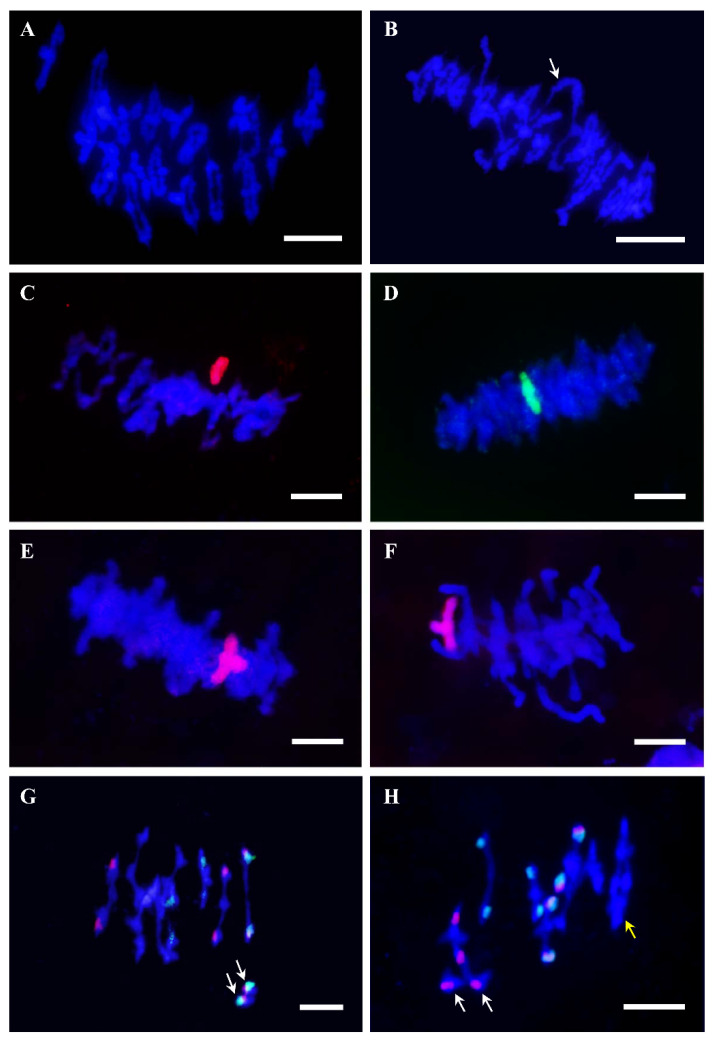Figure 1.
Diploid behavior during meiosis in allopolyploids and autopolyploids. (A,B) Chromosome associations at metaphase I in the presence and in the absence of the Ph1 locus in wheat (T. aestivum; AABBDD). (A) Representative image showing regular bivalent formation in the presence of Ph1. (B) Formation of multivalents (arrow) in the absence of Ph1. (C–F) Fluorescence in situ hybridization showing chromosome associations at metaphase I in wheat lines carrying chromosomes from wheat related species, both in the presence and in the absence of the Ph1 locus. Introgressed homologous chromosomes are visualized associated in disomic lines independently of the presence of the Ph1 locus, although aberrant chromosome associations can be observed in the absence of the Ph1 locus (F). (C) Wheat + pair 6Hv from Hordeum vulgare (red), Ph1Ph1. (D) Wheat + pair 6Hch from Hordeum chilense (green), Ph1Ph1. (E) Wheat + pair 6P from Agropyron cristatum (in red), Ph1Ph1. (F) Wheat + pair 6P from Agropyron cristatum (in red), ph1ph1. (G,H) Chromosome associations at metaphase I in a natural autotetraploid line from A. thaliana. 45S rDNA and 5S rDNA regions are detected in green and red, respectively, to identify the chromosomes. (G) Metaphase I showing a pair of univalents (arrows). (H) Metaphase I exhibiting univalents (white arrows) and a quadrivalent (yellow arrow). Bars for (A–F): 10 µm. Bars for (G,H): 5 µm.

